It’s a question on so many minds: what will the future of education look like?
 Sir Ken Robinson: Do schools kill creativity?
It’s something Sir Ken Robinson has asked for decades. And tonight in Session 3 of TED2013, Robinson got the opportunity to announce the winner of the 2013 TED Prize, someone who has a bold answer.
Sir Ken Robinson: Do schools kill creativity?
It’s something Sir Ken Robinson has asked for decades. And tonight in Session 3 of TED2013, Robinson got the opportunity to announce the winner of the 2013 TED Prize, someone who has a bold answer.
“So many kids are disengaged from education and there’s a tendency to confuse testing with learning,” says Robinson in his introduction. “What drives learning is curiosity, questioning … What fires people up to learn is having their mind opened up by possibilities.”
And with that, he revealed the winner of the $1 million TED Prize: education innovator Sugata Mitra, who has given two TED Talks over the years and released a TED ebook called Beyond The Hole in The Wall.
Mitra wants children around the globe, in addition to traditional schooling, to get a chance to participate in self-organized learning. Translation: to spend time in learning environments where they are given the space to explore on their own, make discoveries and share them with their peers. In his talk from the TED stage, Mitra offered a bold wish: to help design the future of learning by supporting children in tapping into their innate sense of wonder. To this end, Mitra asked the TED community to help him create the School in the Cloud, a learning lab in India where children can embark on intellectual adventures, connecting with information and mentors online. He also asked the community, wherever they may be, to create child-driven learning environments for the kids in their own lives.
In his talk, Mitra points out that schooling as it exists now was created 300 years ago in the British Empire.
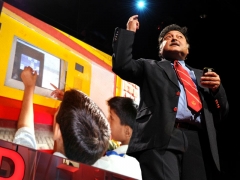 Sugata Mitra: The child-driven education
“The Victorians created a global computer made up of people. It’s called the bureaucratic administrative machine,” says Mitra, in the bold opening of his talk. “In order to keep that running, you need lots and lots of people. They must be identical to each other … So they created a system, called school, to make parts [for this human computer]. They must have good handwriting, they must be able to read, and they must be able to add, subtract and do division.”
Sugata Mitra: The child-driven education
“The Victorians created a global computer made up of people. It’s called the bureaucratic administrative machine,” says Mitra, in the bold opening of his talk. “In order to keep that running, you need lots and lots of people. They must be identical to each other … So they created a system, called school, to make parts [for this human computer]. They must have good handwriting, they must be able to read, and they must be able to add, subtract and do division.”
But these skills aren’t as necessary with the advent of computers.“It’s quite fashionable to say education system is broken,” says Mitra. “It’s not, It’s wonderfully constructed — it’s just that we don’t need it anymore. It’s outdated.”
We can’t imagine the technology of the future, and thus we can’t know what jobs we’ll need the skills for. So Mitra suggests that education should be about developing the ability to learn anything on one’s own.
Mitra has a history of research to back up this wish. In 1999, he began what he calls his “hole in the wall” experiment. He carved a hole in a wall in a Delhi slum — about three feet high — and placed a computer in it. Kids had gathered around within a matter of hours and asked Mitra questions about what this thing was. He responded “I don’t know,” and walked away.
Soon the kids were surfing the internet — and teaching each other how to do it more effectively.
Mitra repeated the experiment 300 miles away, where computers even less familiar. He installed a mysterious computer on the side of a road. A few months later, he returned and found kids playing games on it. Remembers Mitra, “They said, ‘We want a faster processor and a better mouse.’”
Another thing these kids said that was music to his ears: “You’ve given us a machine that works only in English, so we had to teach ourselves English.”
Mitra says, “It was the first time I heard the words ‘teach ourselves’ said so casually.”
Mitra kept testing, seeing if rural students could learn different pronunciation simply by talking into a speech-to-text engine until it understood them. They did it. And then he went even more absurd. He asked: Can Tamil-speaking 12-year-olds learn the biotech of DNA replication by themselves on a streetside computer in English?
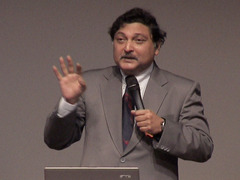 Sugata Mitra: Kids can teach themselves
Slowly but surely, over months, the kids began to learn the material — showing understanding of concepts far advanced for their age. In three months, with a test, they went from 0% comprehension to 30%. But Mitra wanted to see if he could go further. He brought in a 22-year-old woman with no knowledge of the subject to tutor the kids, using “the method of the grandmother.” Instead of traditional instructing, she simply gave encouragement. The kids’ test comprehension scores jumped.
Sugata Mitra: Kids can teach themselves
Slowly but surely, over months, the kids began to learn the material — showing understanding of concepts far advanced for their age. In three months, with a test, they went from 0% comprehension to 30%. But Mitra wanted to see if he could go further. He brought in a 22-year-old woman with no knowledge of the subject to tutor the kids, using “the method of the grandmother.” Instead of traditional instructing, she simply gave encouragement. The kids’ test comprehension scores jumped.
“We live in a world where, when we want to know something, we can learn it in two minutes,” says Mitra. “Could it be, the devastating question, that we’re heading towards a future where knowing is obsolete?”
Mitra isn’t ready to say that, but he is willing to challenge traditional modes of education based on teaching, testing and regurgitation. As Mitra explains, punishments and exams are seen as threats by kids. He says that these are tools no longer needed outside of the age of empire. Mitra urges us all to shift the incentive for education from threat to pleasure.
Mitra shared another one of his experiments — the “granny cloud,” a community of retired teachers who Skyped into learning centers and encouraged children with questions and assignments. He calls this type of environment a SOLE — a self-organized learning environment. It’s based on a curriculum of questions that set curiosity free, varying forms of peer assessment and certification without examination.
“If we let the educational process be a self-organizing organism, learning emerges,” says Mitra. “It’s not about making learning happen, it’s about letting education happen.”
Mitra’s $1 million TED Prize is not a gift– it’s seed money to fund a global initiative toward this vision. The money will help Mitra break ground on the School in the Cloud in India this very year. This school will serve as both an education and research center to further explore approaches to self-directed learning. It will be managed by cloud technology, but with an adult supervisor always on hand. The plans for the school will be open-sourced.
But Mitra is asking for your help, too.
He has released a toolkit for parents, educators and teachers who want to create SOLEs. The online resource will help them support kids (8-12 years old) as they tap into their innate sense of wonder. The key: asking big questions. For example, “If a meteroite was coming toward the earth, how would you figure out if it was going to hit?” Mitra has been amazed with how kids come up with new approaches to questions like this.
Closing his talk, Mitra shared an anecdote. “A little girl was following me around. I said, ‘I want to give a computer to everyone,’” recalls Mitra. “She reached out her hand and she said to me, ‘Get on with it.’”
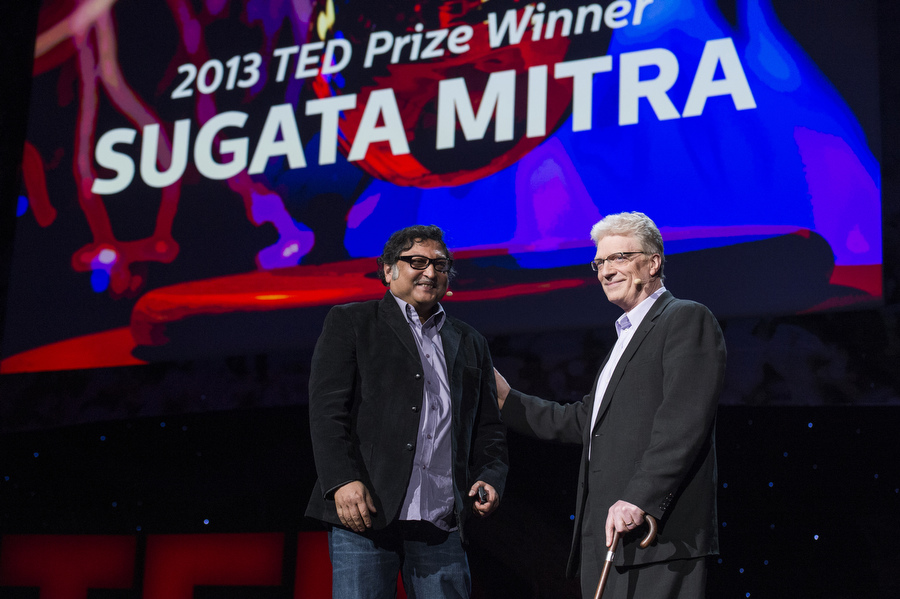
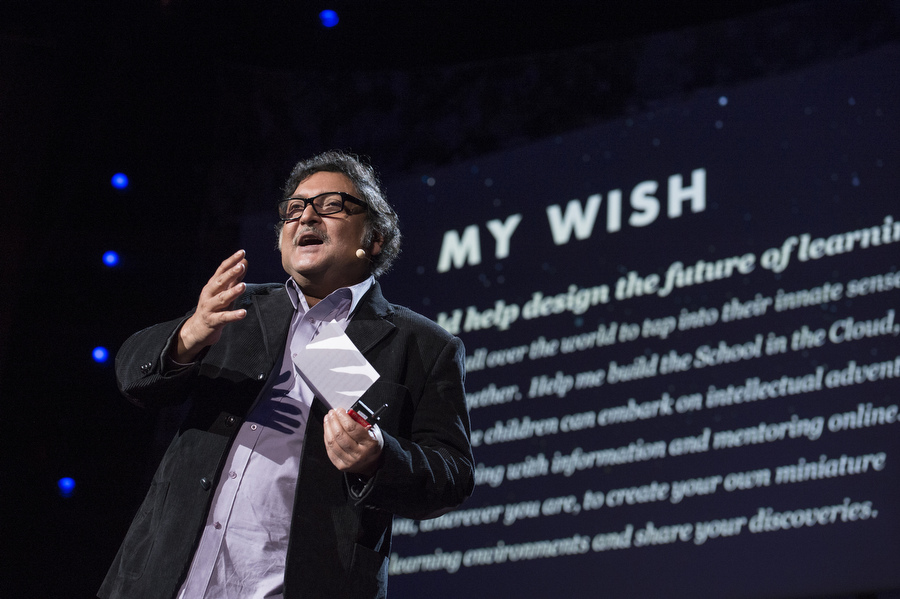
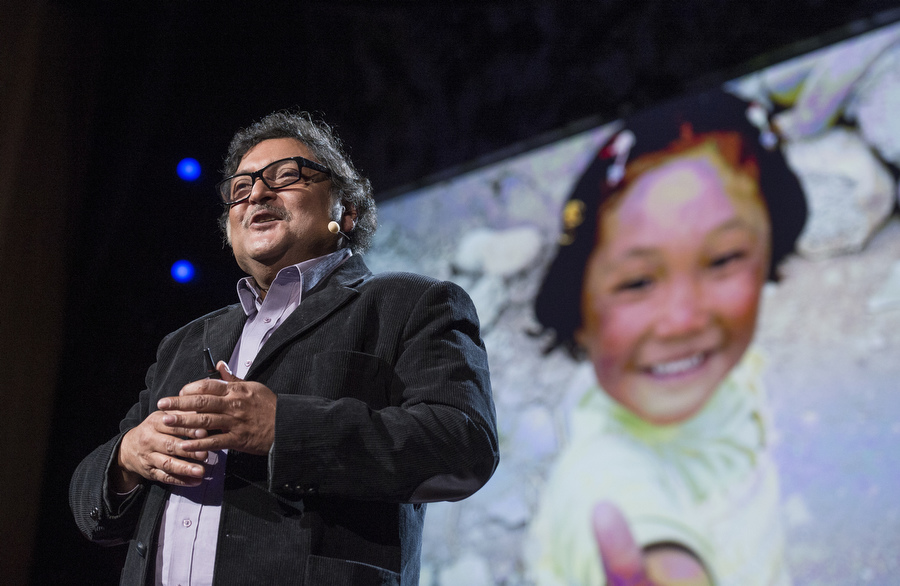
Comments (44)
Pingback: A World of Knowledge: 50 Different Views of Education
Pingback: Innovation Excellence | A World of Knowledge: 50 Different Views of Education
Pingback: Modern Trends In Education: 50 Different Approaches To Learning | Teach Thought – The International Educator
Pingback: Modern Trends In Education: 50 Different Approaches To Learning
Pingback: A World of Knowledge: 50 Different Views of Education - InformED :
Pingback: OUTdoctrination of INternational Education | Media & International Education
Pingback: Why this blog | Learning about innovations in education
Pingback: Облаци над школом – Широм затворених очију 2 | ОШ "Бранко Радичевић" - Неготин
Pingback: Who Needs a Teacher? « pleasureinlearning
Pingback: Educational IT - Patrick Farenga - Education Grows From a Hole in the Wall to the Cloud
Pingback: Effective Educational Leadership: Wishful Thinking | Profesorbaker's Blog: A Bit of Everything
Pingback: Reflektioner över del 3, Combinatorial Storytelling; or, The Dawn of New Narrative Forms | Jenny om Digitalt Berättande och Kreativt Lärande
Pingback: Hacknime školstvo! | Saskia Repčíková | Blogy | eTREND - expert na ekonomiku a financie
Pingback: The Independent Project | johnmmcculley
Pingback: Lundi magique d’inspiration : Sugata Mitra, le gagnant du Prix TED2013 réimagine l’éducation d’aujourd’hui et de demain | Désobéissante Civile, Moi Pas Bouger d'Internet
Pingback: 2013 TED Prize 大獎得主的遠大抱負 | TEDxTaipei
Pingback: What would a school look like if students designed it themselves? - Kleber's BlogKleber's Blog
Pingback: This weeks links (2012-03-04) | Visible Procrastinations